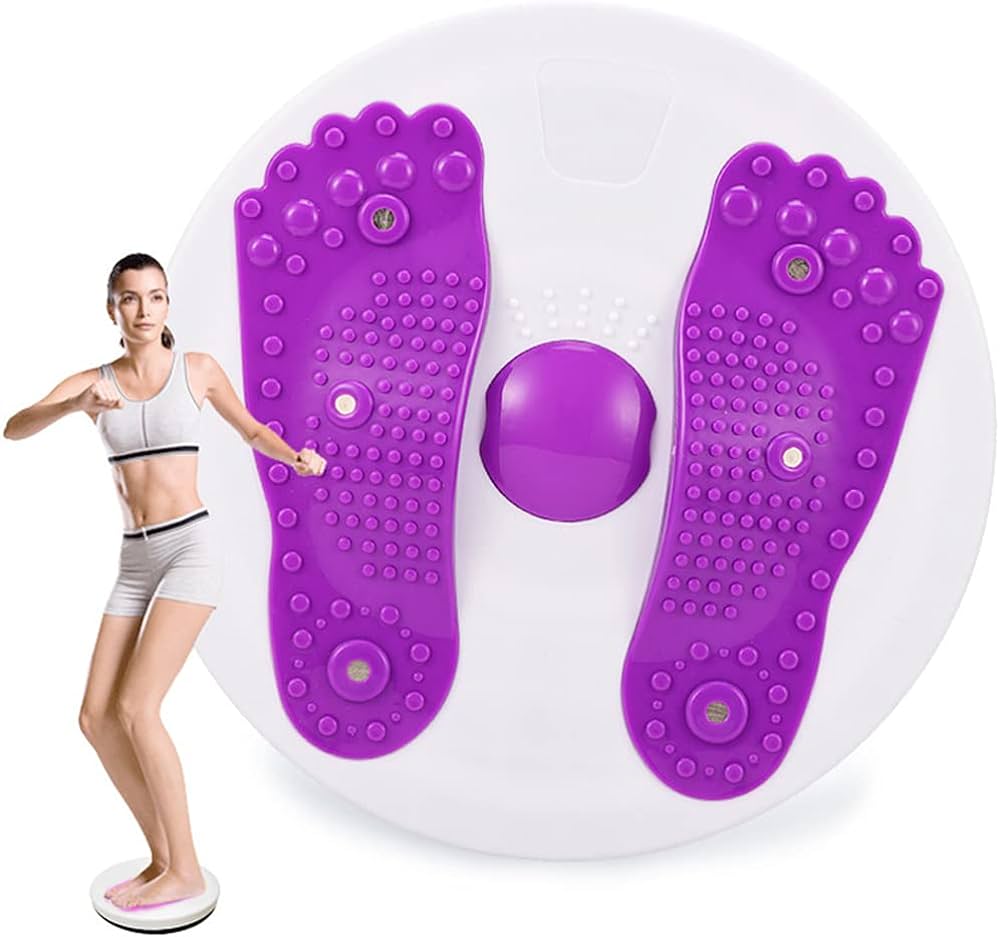Maintain a balanced diet and exercise regularly for optimal health and fitness. Stay hydrated and get adequate sleep to bolster well-being.
Achieving a healthy lifestyle requires a blend of nutrition, physical activity, and rest. A balanced diet filled with a variety of nutrients supports body function and energy levels. Regular exercise strengthens the heart, improves muscle tone, and boosts mood, while also aiding in weight management.
Drinking plenty of water sustains hydration, essential for every bodily process. Sufficient sleep, around 7-9 hours for adults, helps with recovery and cognitive function. Combining these elements creates a strong foundation for overall health. Remember that consistent small changes can lead to significant benefits over time, and it’s vital to tailor these tips to your individual needs and goals for personal fitness.
Health Fitness Tips for Importance Of Regular Exercise
The Importance of Regular Exercise cannot be overstated when it comes to maintaining a healthy lifestyle. Engaging in physical activity on a consistent basis can improve cardiovascular health, boost mental well-being, and promote physical fitness. Whether your goal is weight loss, muscle building, or just feeling better day-to-day, understanding the different types of exercise and their benefits is crucial.
Health Fitness Tips Aerobic Vs. Anaerobic
Aerobic exercise, also known as cardio, is characterized by prolonged activity that increases your heart rate and breathing. It’s excellent for improving heart health and burning calories. Popular forms include:
- Running or jogging
- Cycling
- Swimming
- Brisk walking
Conversely, anaerobic exercise involves quick bursts of activity and is designed to build strength and muscle mass. These exercises include:
- Weight lifting
- Sprinting
- High-intensity interval training (HIIT)
Combining both aerobic and anaerobic workouts offers a comprehensive fitness regime that caters to all aspects of health.
Incorporating Strength Training
Strength training, an anaerobic activity, is vital for building muscle mass and strengthening bones. Regular strength training can help with weight control as muscle tissue burns more calories than fat tissue, even at rest. Include exercises such as:
- Squats
- Deadlifts
- Bench presses
- Overhead presses
Aim to perform strength training at least two times per week targeting all the major muscle groups for optimal results.
Flexibility And Balance Exercises
Flexibility and balance are often overlooked aspects of physical fitness, yet they are critical for injury prevention and overall body function. Regular stretching and balance exercises can enhance your range of motion and reduce the risk of falls. Incorporate:
| Exercise | Benefit |
|---|---|
| Yoga | Improves flexibility, balance, and mental focus |
| Tai Chi | Promotes balance and calm |
| Dynamic stretches | Increases blood flow and muscle suppleness |
| Pilates | Strengthens core and improves balance |
Practicing these activities consistently can lead to better posture, fewer aches and pains, and an overall sense of well-being.

Credit: shopvitality.com
Balanced Diet For Vitality
A vibrant lifestyle stems from the fuel we provide our bodies. Understanding the intricate balance of a diet that enriches energy and maintains health is essential for peak performance and well-being. Whether aiming to enhance fitness levels, support bodily functions, or boost mental acuity, the foundation lies in a carefully curated, balanced diet that delivers vitality with every bite. Embrace the following pillars of nutrition to unlock the potential of a truly dynamic life.
Nutrient-dense Foods
Maximizing the nutritional punch of each meal is crucial for a high-performing body. Nutrient-dense foods offer a plethora of benefits, packing vitamins, minerals, and other health-promoting compounds without excessive calories. To elevate overall health, incorporate these staples into your daily regimen:
- Leafy greens like spinach and kale
- Berries rich in antioxidants
- Whole grains for sustained energy
- Nuts and seeds, the perfect blend of protein and healthy fats
- Lean meats and fish, high in omega-3s
Hydration For Fitness
Maintaining hydration is a non-negotiable aspect of any fitness routine. Adequate water intake supports a spectrum of bodily functions and enhances performance. Consider these hydration tips:
- Drink at least eight 8-ounce glasses of water daily, more if exercising vigorously.
- Include water-rich foods in your diet such as cucumbers and watermelon.
- Monitor your urine color as a gauge for hydration – aim for pale straw.
- Replenish fluids after workouts to replace what’s lost through sweat.
The Role Of Protein
Protein is the building block of muscles, and its role in repairing and building tissue is indispensable in any diet focused on fitness. Consuming adequate protein ensures not only muscle growth but also the proper function of hormones and enzymes. Striking the right balance often involves choosing high-quality protein sources:
| Protein Source | Benefits |
|---|---|
| Chicken breast | Lean meat, high in protein and low in fat |
| Legumes | Fiber-rich and a great plant-based protein option |
| Eggs | Contains all 9 essential amino acids |
| Greek Yogurt | High in protein and probiotics for gut health |
Remember, the key to a winning diet is both variety and moderation. Regularly alternating protein sources will not only combat dietary boredom but also ensure a well-rounded intake of all necessary nutrients.
Sleep And Recovery
Proper sleep and recovery are cornerstones of a healthy lifestyle. They are as critical to your fitness journey as the workout itself. Prioritizing good sleep boosts the effectiveness of your daily activities and workouts. It’s when you’re resting that your body repairs muscles, consolidates memories, and releases hormones that regulate growth and appetite. Let’s explore some essential steps to enhance your sleep quality and recovery time.
Creating A Restful Environment
To maximize recovery, a restful environment is paramount. Here are key elements to consider:
- Dim the Lights: Exposure to less light before bedtime can signal your brain to produce melatonin, the sleep hormone.
- Optimize Your Bedroom Temperature: The ideal temperature for sleep is around 65°F (18.3°C). A cool room can aid in falling asleep faster.
- Invest in a Quality Mattress and Pillows: Comfort in bed is non-negotiable. Ensure your mattress and pillows support your preferred sleeping position.
- Minimize Noise: A quiet environment reduces the chances of interruptions during sleep. Consider earplugs or a white noise machine if you can’t control external sounds.
- Reduce Electronic Use: Screens emit blue light, which can disrupt your body’s ability to prepare for sleep. Try to avoid devices at least an hour before bedtime.
Mindfulness And Meditation Practices
Mindfulness and meditation are invaluable tools for improving sleep quality:
- Establish a Mindfulness Routine: Dedicate time before bed to unwind and clear your mind. This can mean reading, deep breathing, or stretching.
- Guided Meditation: Use apps or online resources for guided meditations designed specifically to enhance sleep quality.
- Body Scan Technique: Lie in bed and focus on relaxing each part of your body, starting from your toes and moving upwards. This can ease physical tension and promote better sleep.
- Practice Gratitude: Reflect on positive aspects of your day or things you are grateful for; this can reduce stress and encourage a serene state of mind.
Incorporating these mindfulness exercises into your nightly routine can transform your sleep experience, ensuring that you wake up rejuvenated and ready to tackle your fitness goals.
Incorporating Daily Movement
Embracing a philosophy of daily movement can have profound effects on your overall health and well-being. Beyond structured workouts at the gym, incorporating regular activity into your routine doesn’t require dramatic changes to your lifestyle but can yield significant benefits. From boosting circulation and metabolism to enhancing mood and cognitive function, the key lies in finding simple ways to be more active throughout your day. Let’s explore some actionable strategies to elevate your daily dose of movement.
Walking And Neat
The benefits of walking are often underestimated. This fundamental form of movement is accessible, free, and can be done almost anywhere. But, there’s more to walking than merely getting from A to B. It’s also an excellent example of Non-Exercise Activity Thermogenesis (NEAT), which refers to the energy expended for activities that are not related to sleeping, eating, or sports-like exercise. Here’s how to incorporate more walking and NEAT into your everyday life:
- Take the stairs instead of elevators whenever possible.
- Walk to communicate with colleagues in the office rather than sending an email.
- Park your car further away from entrances.
- Opt for walking meetings.
Avoiding Sedentary Behavior
Sedentary behavior is the new smoking when it comes to health risks. Prolonged sitting can contribute to a range of chronic health issues, including heart disease and diabetes. Combat sedentary habits by making these adjustments:
- Set a timer to remind you to stand or walk every 30 minutes.
- Invest in a standing desk, or create a makeshift one at home.
- Stretch or do simple exercises during TV commercials or while waiting for the kettle to boil.
- Utilize smartphone apps that prompt regular movement breaks.
Cultivating Active Hobbies And Interests
Finding hobbies that encourage physical activity can transform the way you view exercise. Instead of viewing it as a chore, it becomes a pleasurable and rewarding pastime. Explore the following ideas to cultivate a more active lifestyle:
| Hobby | Benefits | Activity Level |
|---|---|---|
| Gardening | Builds strength, enhances mood | Moderate |
| Dancing | Improves balance, cardiovascular health | High |
| Cycling | Boosts endurance, provides joint-friendly exercise | Variable |
Incorporate these active hobbies into your routine and watch as your daily motion quota increases without the need for structured workouts.
Setting Realistic Fitness Goals
A journey of a thousand miles starts with a single step, and the same holds true when embarking on the path to physical fitness. Often, people get swept up in the excitement of a new fitness regimen and set goals that are overly ambitious. The key to long-term success is the establishment of realistic, attainable fitness objectives. So, how do you set fitness goals that will keep you motivated without setting you up for disappointment?
Tracking Progress And Adjusting Targets
Without tracking progress, your fitness goals are just wishful thinking. Measuring your advancements provides concrete evidence of your hard work and can boost motivation. From the number of reps in a set to the duration and intensity of your workouts, the metrics you choose to track should align with your goals. Whether you use a fitness app, a traditional journal, or integrate wearable technology, monitoring your progress is pivotal.
- Maintain a workout log
- Regularly check fitness milestones
- Use measurements like time, weight, reps, and distances
As you make progress, it’s crucial to periodically reevaluate and adjust your targets. This adaptive approach helps to continuously challenge your body and can prevent fitness plateaus. Perhaps after the first month, a 30-minute jog becomes easy, so you push it to 45 minutes. The capacity to tailor your goals will keep your fitness journey aligned with your growing capabilities.
Remember: goals should be SMART – Specific, Measurable, Achievable, Relevant, and Time-bound.
Building A Supportive Environment
Surrounding yourself with a supportive environment is fundamental to achieving your fitness goals. This includes the people around you as well as your physical space. Cultivate a support system that encourages and champions your efforts. Whether it’s a workout buddy, a personal trainer, or an online community, a network of support makes the journey more enjoyable and accessible.
- Join fitness groups or classes
- Enlist the help of friends and family
- Create a positive and motivating workout space
Additionally, your environment should be conducive to success. This might mean setting up a small home gym, ensuring you have the right equipment, or simply organizing your workout gear the night before. Streamline your routine to remove any barriers to getting active. A smooth, frictionless start to your workout can mean the difference between making steady progress or facing unnecessary challenges.
The interplay between personal accountability and external support systems forms a synergy that propels you towards your fitness milestones.
Frequently Asked Questions Of Health Fitness Tips
How To Start A Fitness Routine?
Starting a fitness routine begins with setting realistic goals and choosing activities you enjoy. Begin with moderate exercises, like brisk walking for 30 minutes daily. Gradually include strength training, and always prioritize proper form to prevent injuries.
What Are The Best Exercises For Weight Loss?
High-intensity interval training (HIIT), strength training, and cardio exercises like running and cycling are highly effective for weight loss. These activities burn significant calories and can increase your metabolic rate, promoting more calorie burn even at rest.
How Often Should I Work Out?
Most health experts recommend at least 150 minutes of moderate-intensity or 75 minutes of high-intensity cardio per week. Include strength training for all major muscles groups on 2 or more days per week for additional health benefits.
Can Diet Impact Fitness Levels?
Yes, diet has a significant impact on fitness levels. Consume a balanced diet rich in vegetables, fruits, lean proteins, and whole grains. Proper nutrition provides energy for workouts and aids in recovery and muscle building. Stay hydrated and limit processed foods.
Conclusion
Embracing these health-fitness tips can significantly enhance your well-being. Consistency is key, so integrate these strategies into your daily routine for lasting benefits. Fitness is a journey, not a destination. Let’s make it enjoyable and effective by staying informed and proactive about our health.
To your vitality!



